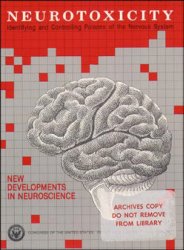Among the viruses soapy hand washing flushes down the drain is the one that causes the common cold. Other removable viruses cause hepatitis A, acute gastroenteritis and a host of other illnesses.
A separate key finding was that waterless handwipes only removed roughly 50 percent of bacteria from volunteer subjects' hands.
"We studied the efficacy of 14 different hand hygiene agents in reducing bacteria and viruses from the hands," said Emily E. Sickbert-Bennett, a public health epidemiologist with the University of North Carolina Health Care System and the UNC School of Public Health. "No other studies have measured the effectiveness in removing both bacteria and viruses at the same time."
For the first time, too, the UNC researchers tested what happened when people cleaned their hands for only 10 seconds, Sickbert-Bennett said. That represented the average length of time researchers observed busy health-care personnel washing or otherwise disinfecting their hands at work.
"Previous studies have had people clean their hands for 30 seconds or so, but that's not what health-care workers usually do in practice, and we wanted to test the products under realistic conditions," she said.
Anti-microbial agents were best at reducing bacteria on hands, but waterless, alcohol-based agents had variable and sometimes poor effects, becoming less effective after multiple washes, Sickbert-Bennett said. For removing viruses from the hands, physical removal with soap and water was most effective since some viruses are hardy and relatively resistant to disinfection.
A report on the findings appears in the March issue of the American Journal of Infection Control. Other authors are Drs. William A. Rutala and David J. Weber, professors of medicine and epidemiology at the UNC schools of medicine and public health; Dr. Mark D. Sobsey, professor of environmental sciences and engineering in public health; and medical technologist Maria F. Gergen-Teague. Dr. Gregory P. Samsa, a Duke University biostatistician, helped analyze the data.
"These findings are important because health-care associated infections rank in the top five causes of death, with an estimated 90,000 deaths each year in the United States," Rutala said. "Hand hygiene agents have been shown to reduce the incidence of health-care associated infections, and a variety of hand hygiene agents are now available with different active ingredients and application methods.
"Our study showed that the anti-microbial hand washing agents were significantly more effective in reducing bacteria than the alcohol-based handrubs and waterless handwipes," he said. "Our study also showed that, at a short exposure time of 10 seconds, all agents with the exception of handwipes demonstrated a 90 percent reduction of bacteria on the hands."
Alcohol-based handrubs were generally ineffective in demonstrating a significant reduction of a relatively resistant virus, Rutala said. While the use of alcohol-based handrubs will continue to be an important infection control measure, it is important to recommend or require traditional hand washing with soap and water throughout each day.
Researchers first had volunteers clean their hands and then contaminated their hands with Serratia marcescens and MS2 bacteriophage. Those are, respectively, a harmless bacterium and virus comparable to, and substituted for, disease-causing organisms. After that, scientists had the subjects clean their hands with various agents and measured how much of the bacteria and virus remained afterwards.
Sixty-two adults volunteered for and participated in the study. Investigators performed five evaluations on each of the 14 agents. The N.C. Statewide Program for Infection Control and Epidemiology supported the research.
With the proliferation of expensive products with extravagant claims, it is refreshing to see the proven efficacy of a traditional method to maintain cleanliness. The effects of soap and water on the environment, both that inside our dwellings and in the outer world, are pretty well known, so one wonders if it is wise to introduce other agents that may have unknown toxic or unbalancing effects into our homes, especially if they are not needed.

 Wheat-free pasta with pesto sauce and oil rich fish
Wheat-free pasta with pesto sauce and oil rich fish










